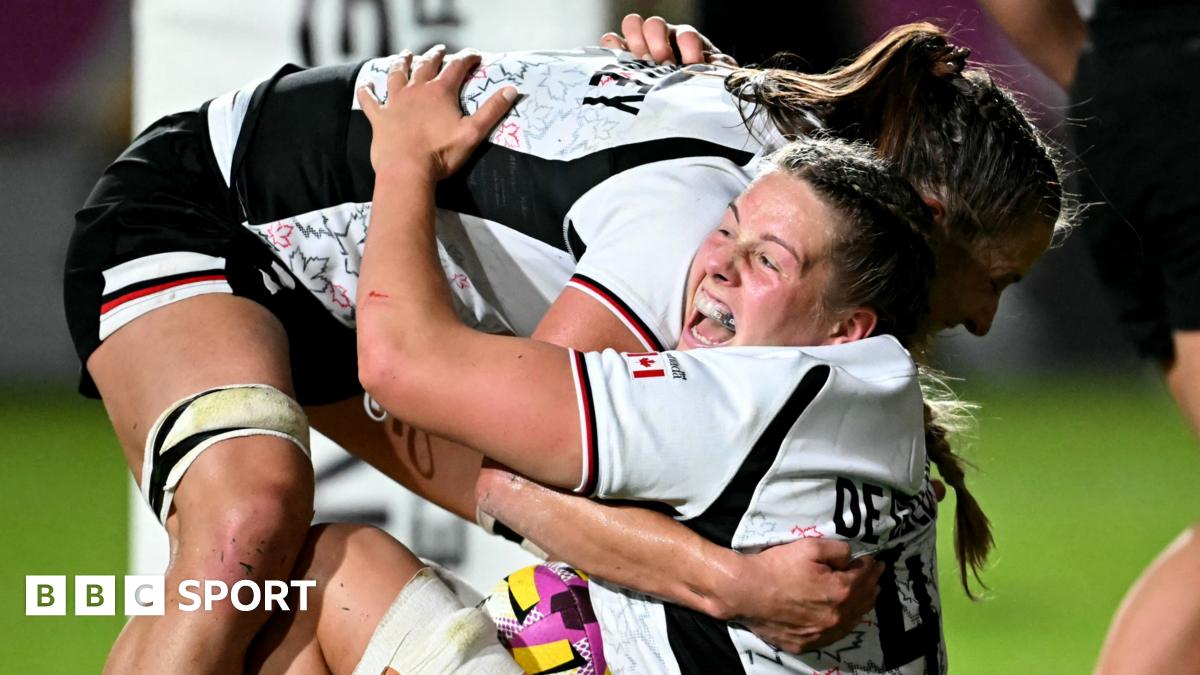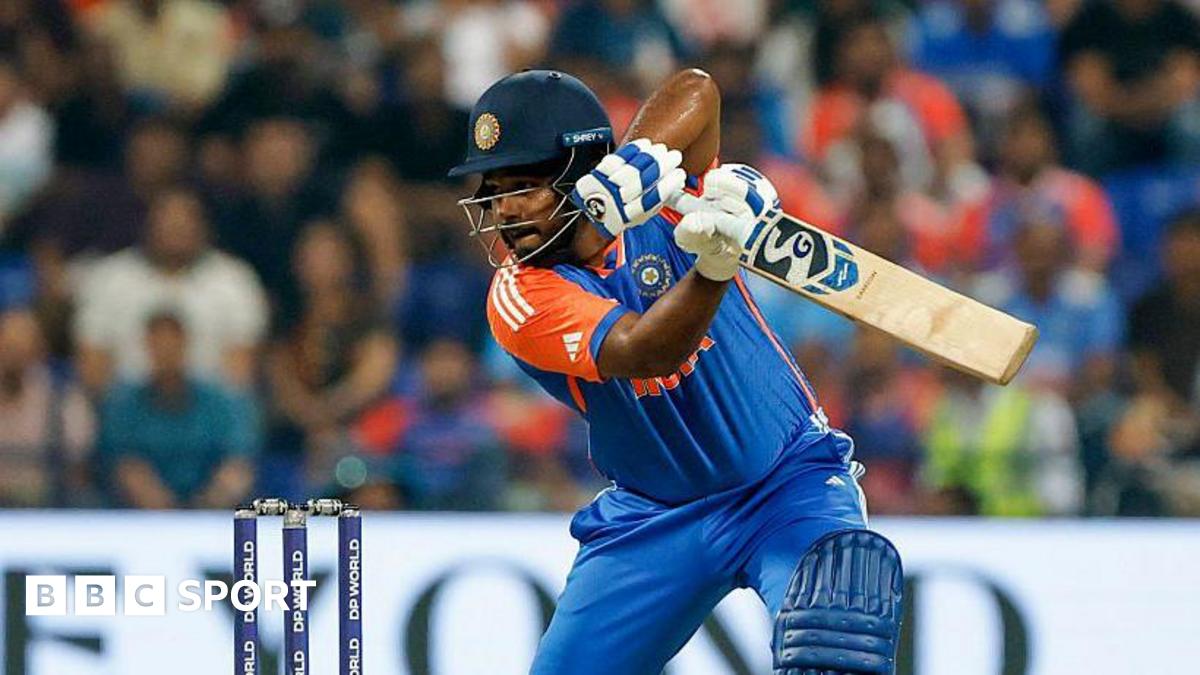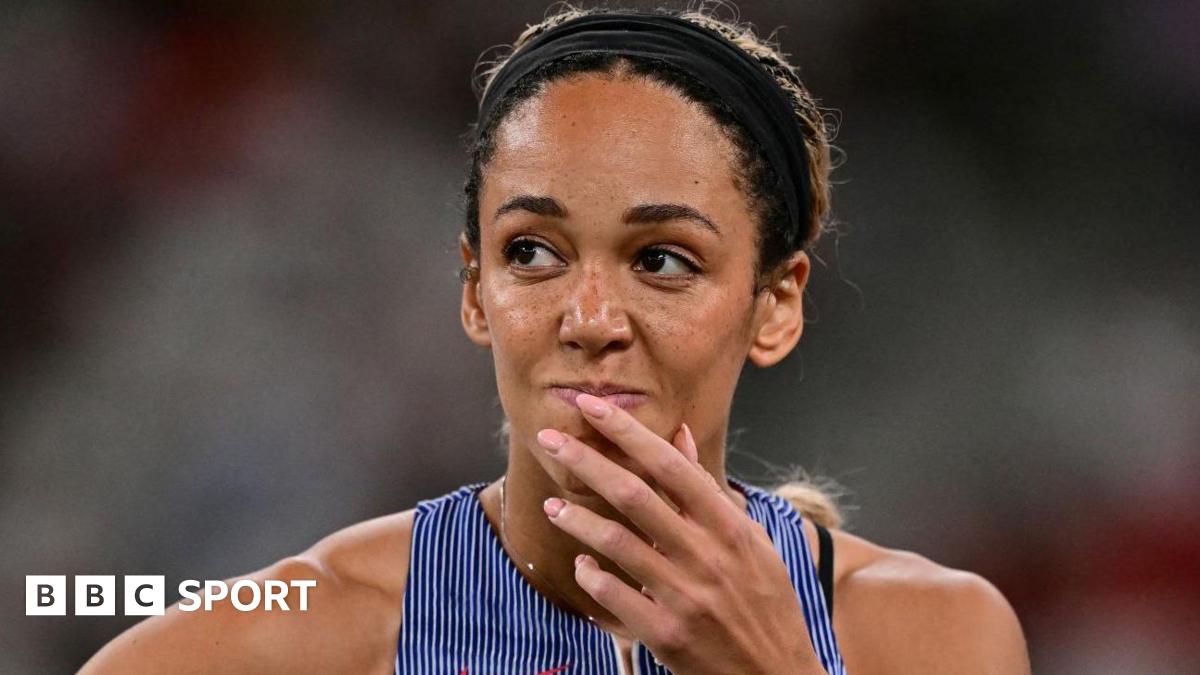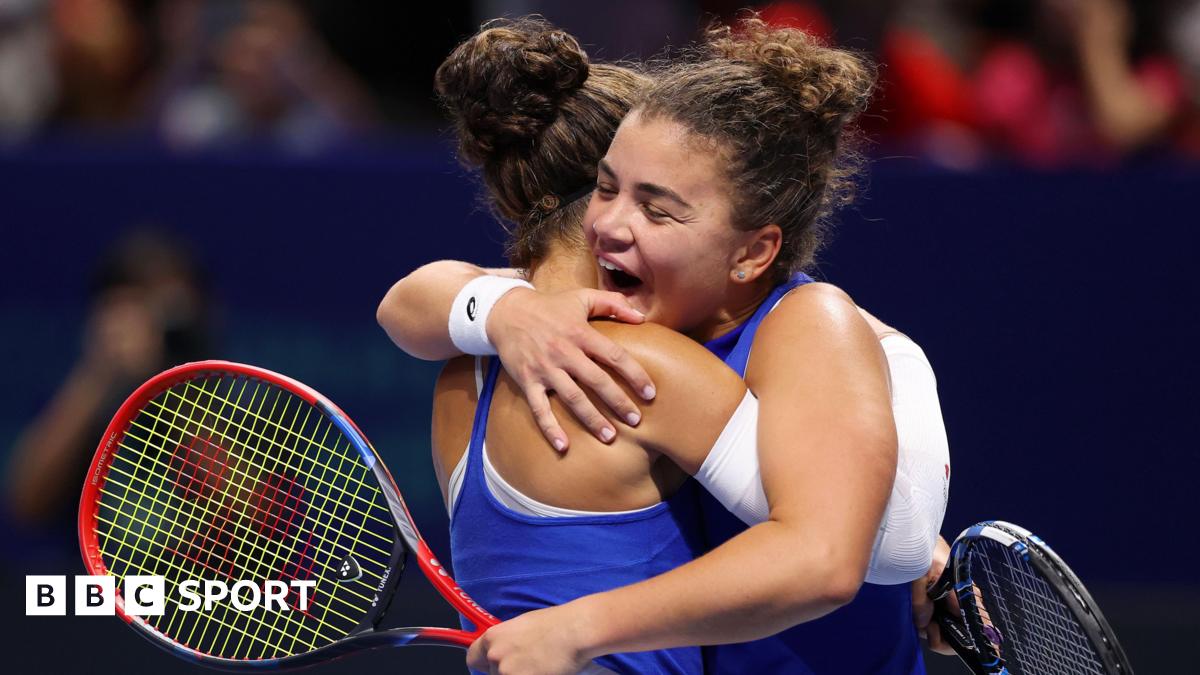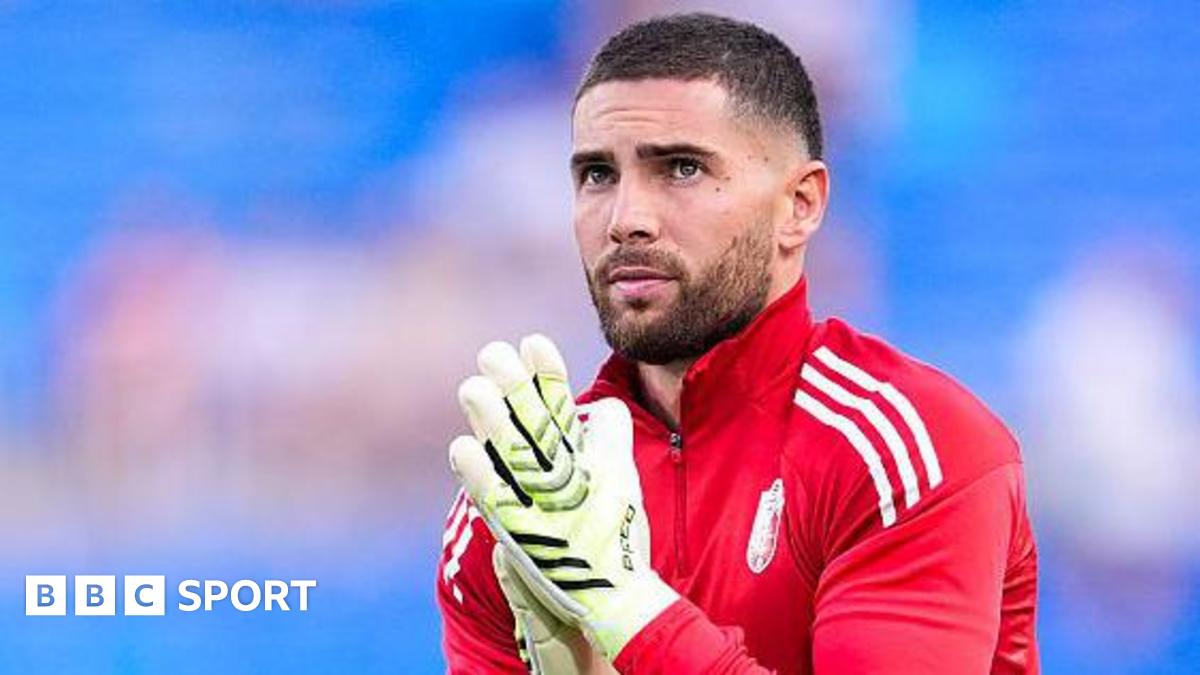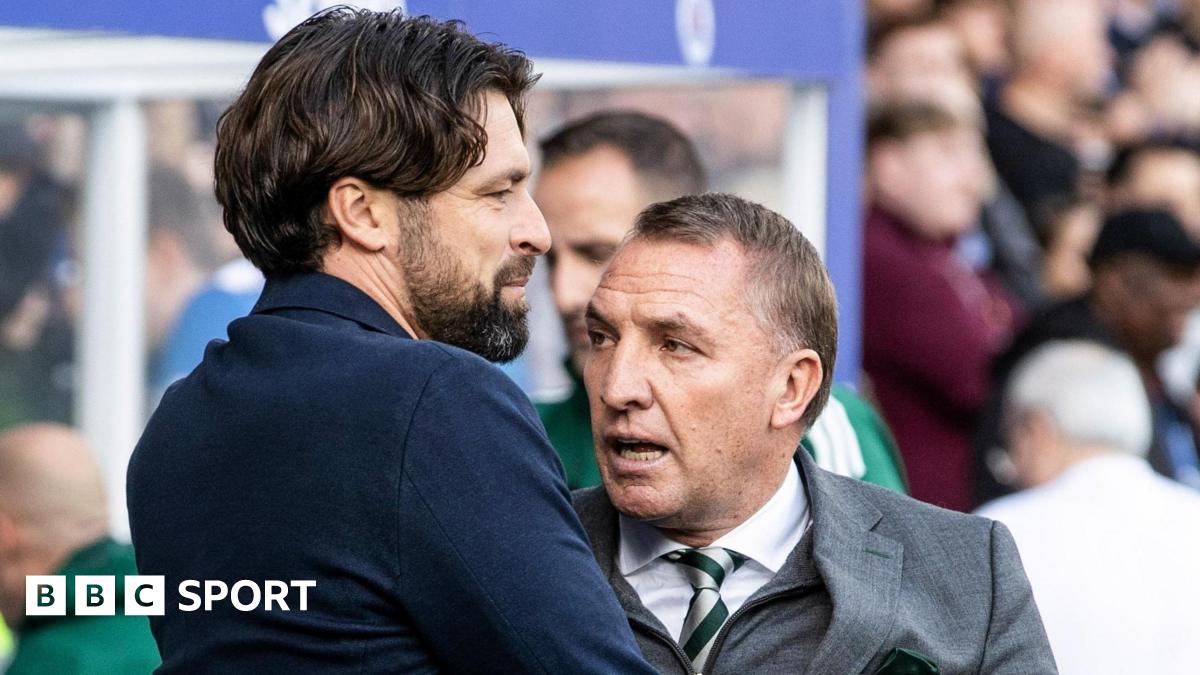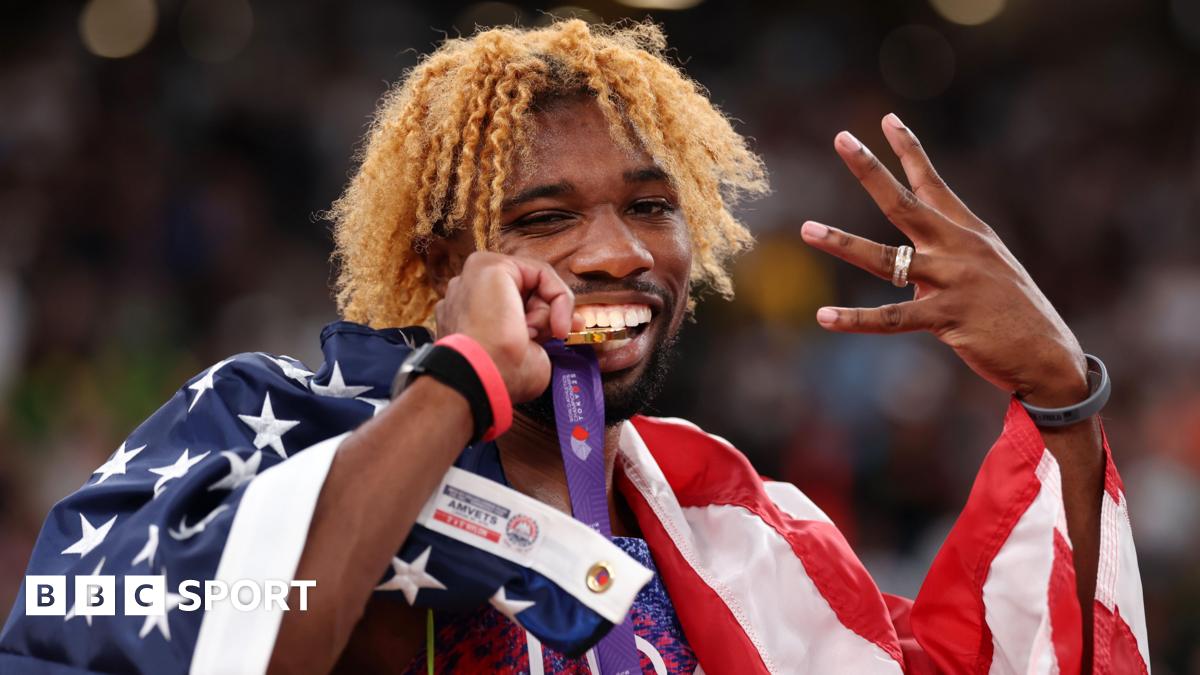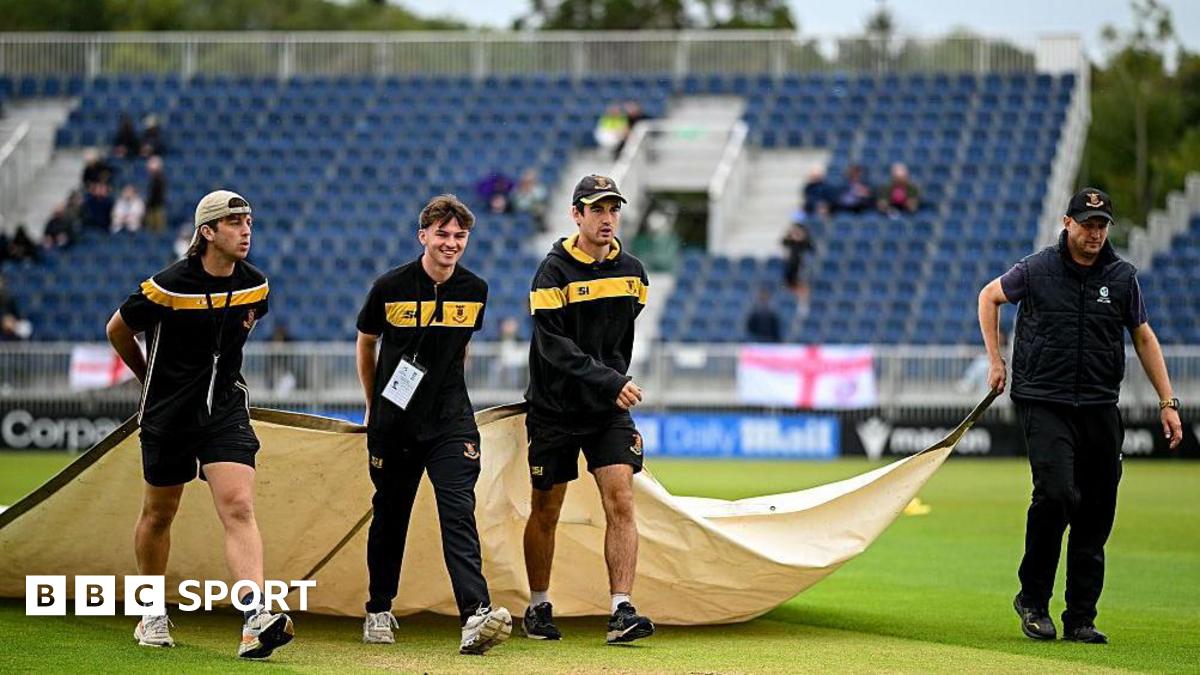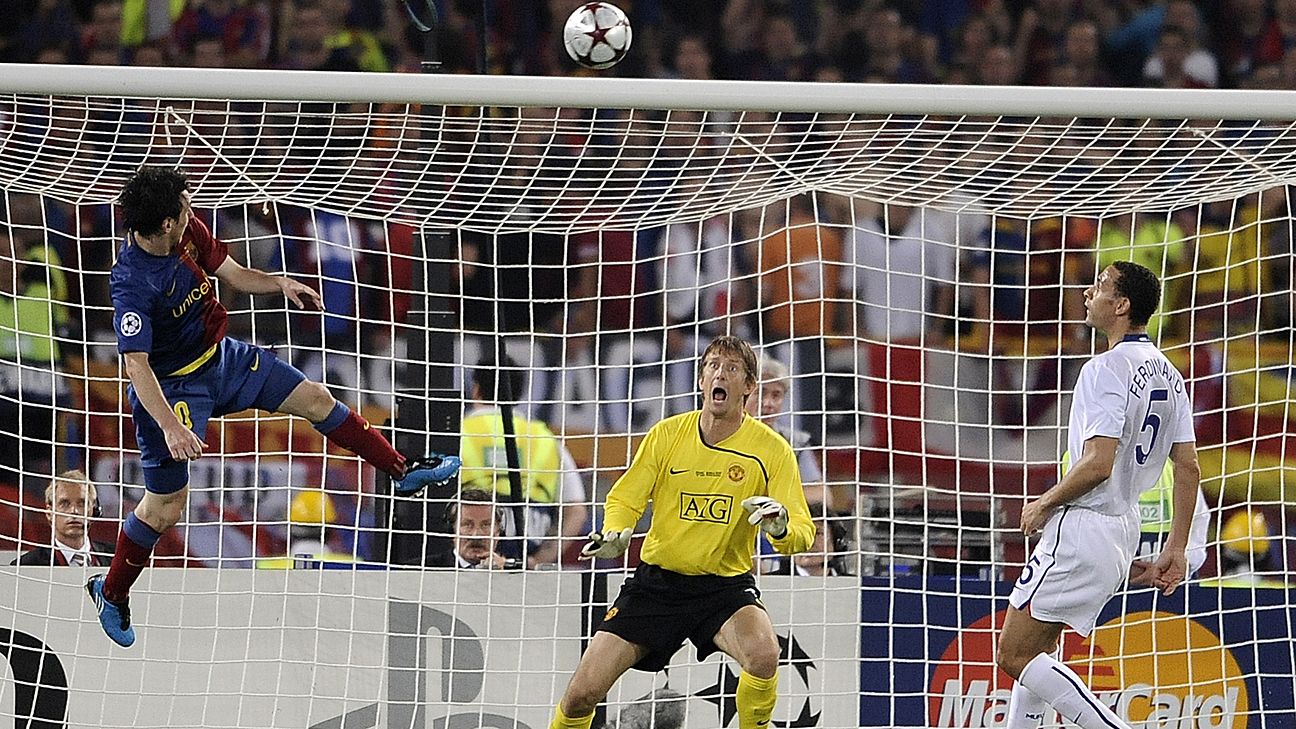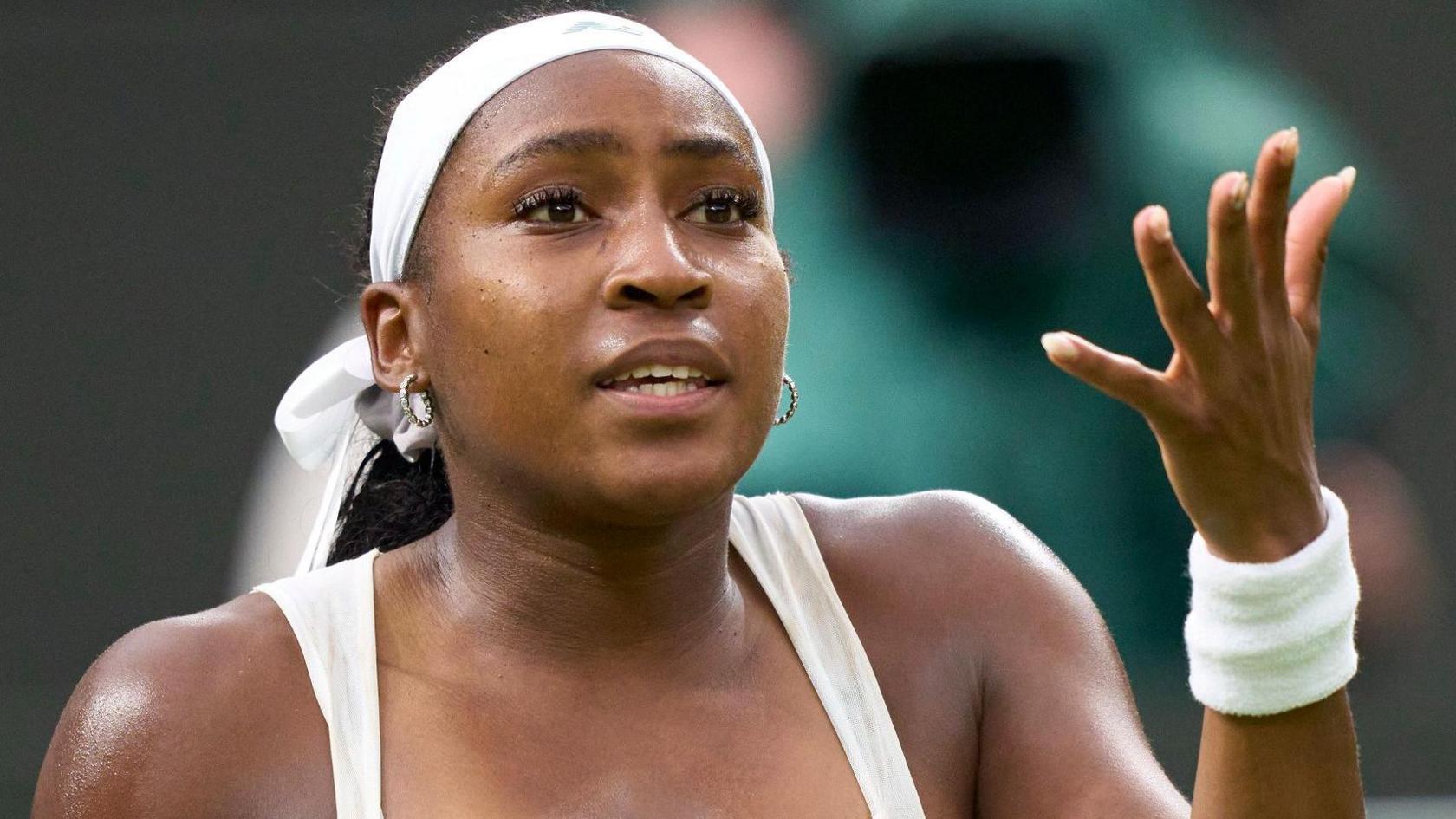 Image source, Getty Images
Image source, Getty Images
Women's world number two Coco Gauff is the highest-ranked player to lose at this year's Wimbledon
Harry Poole
BBC Sport journalist at Wimbledon
Sports News Correspondent
Seismic shocks have been a hot topic in the opening days at Wimbledon - and for good reason.
With just one second-round match to conclude at the end of Thursday's play, a record 36 seeded players had been eliminated - surpassing the tally of 35 at this stage of the 2020 French Open.
The unprecedented number of high-profile exits have opened up the men's and women's singles draws, with French Open champion Coco Gauff and men's third seed Alexander Zverev among the highest-ranked players to exit.
A record total of eight top-10 seeded players dropped out in the first round - the most at any major tournament since the start of the Open era in 1968.
Only one of the top-five seeded women's players - world number one Aryna Sabalenka - has progressed to the third round for just the second time in the Open era.
Four of the top-10 ranked players exited in the first round at a Slam for only the third time in the past 25 years, before British fourth seed Jack Draper also fell in the second round.
So, what could explain it?
Unusual conditions
Players had to contend with sweltering conditions as Wimbledon recorded its hottest opening day on record, with temperatures exceeding 30C on Monday and Tuesday.
They were given ice packs, cold towels and plenty of water to help cope with the conditions - but some still reported struggling and Briton Cameron Norrie admitted the weather "was a bit of a shock to the system".
In addition to the heat, its effect on the grass courts and their interaction with the balls has been a source of frustration for some players.
Canadian 27th seed Denis Shapovalov, knocked out in the first round, said: "The balls are the worst, the grass tour has turned into a joke. This isn't grass any more, the court is slower than a clay one."
Slower courts allow players more time to play the ball, leading to longer rallies and physically-draining longer matches.
While Wimbledon's head groundsman Neil Stubley agreed the heat has contributed to slower courts as the dry grass grips the ball more, he felt criticism of the bounce was unfair.
'Heavy and slow' balls
What about the balls then? Is there anything different there?
After her outstanding win over former champion Marketa Vondrousova, British number one Emma Raducanu spoke about the influence she felt they were having.
"You get a little bit extra with the new balls [but] I feel like once they're a few games or a few long rallies in, these Slazenger balls really fluff up quite quickly and get heavy and slow," she said. "I think it benefits the bigger hitters because they have time to load and give it some."
Raducanu's coach Mark Petchey previously claimed heavier tennis balls are affecting her ability to compete with the game's big hitters.
According to Wimbledon, no changes have been made to the specification of the ball since 1995, but players should expect the ball to feel lighter and faster on a warm, dry day, compared to heavier and slower on a cold, damp day.
Short grass season
One factor that is unchanged but remains an issue for players is the quick turnaround before - and short nature of - the grass court season.
It lasts for less than 50 days, beginning for some before the conclusion of the French Open at the start of June and ending with Wimbledon on 13 July.
Gauff managed to enter just one grass court tournament - losing in the Berlin Open first round - before Wimbledon, having won the French Open on 7 June.
"I think this Slam, out of all of them, is the most prone to having upsets because of how quick the turnaround is from clay," said the American second seed.
Wimbledon tournament director Jamie Baker told BBC Sport: "Definitely, the players spend less time on grass than they do on other surfaces. I think the big macro picture is just the calendar is too long and the players are playing too much."
Player burnout
Concerns have long been raised by high-profile players regarding the schedule.
Norway's Casper Ruud criticised the ranking system earlier this year, describing it as "a rat race", while Australian world number nine Alex de Minaur put his early French Open exit down to "feeling burned out".
After her second-round loss, women's fourth seed Jasmine Paolini said she needed to try to "reset" mentally, adding: "I feel a little bit tired right now. It was two intense months before here."
On that topic, Raducanu said: "It's a mentally really challenging sport. What I've found [useful] is trying to surround yourself with good people, trying to win the day and focus on the process as much as possible. It's really difficult to take your joy from the results because it's so up and down. It's a rollercoaster."
German Zverev, the highest-ranked casualty in the men's draw so far after a five-set loss to the 72nd-ranked Arthur Rinderknech, also spoke openly about finding himself "in a hole", saying he felt "very alone" out on the court and has struggled mentally since losing the Australian Open final to Jannik Sinner in January.
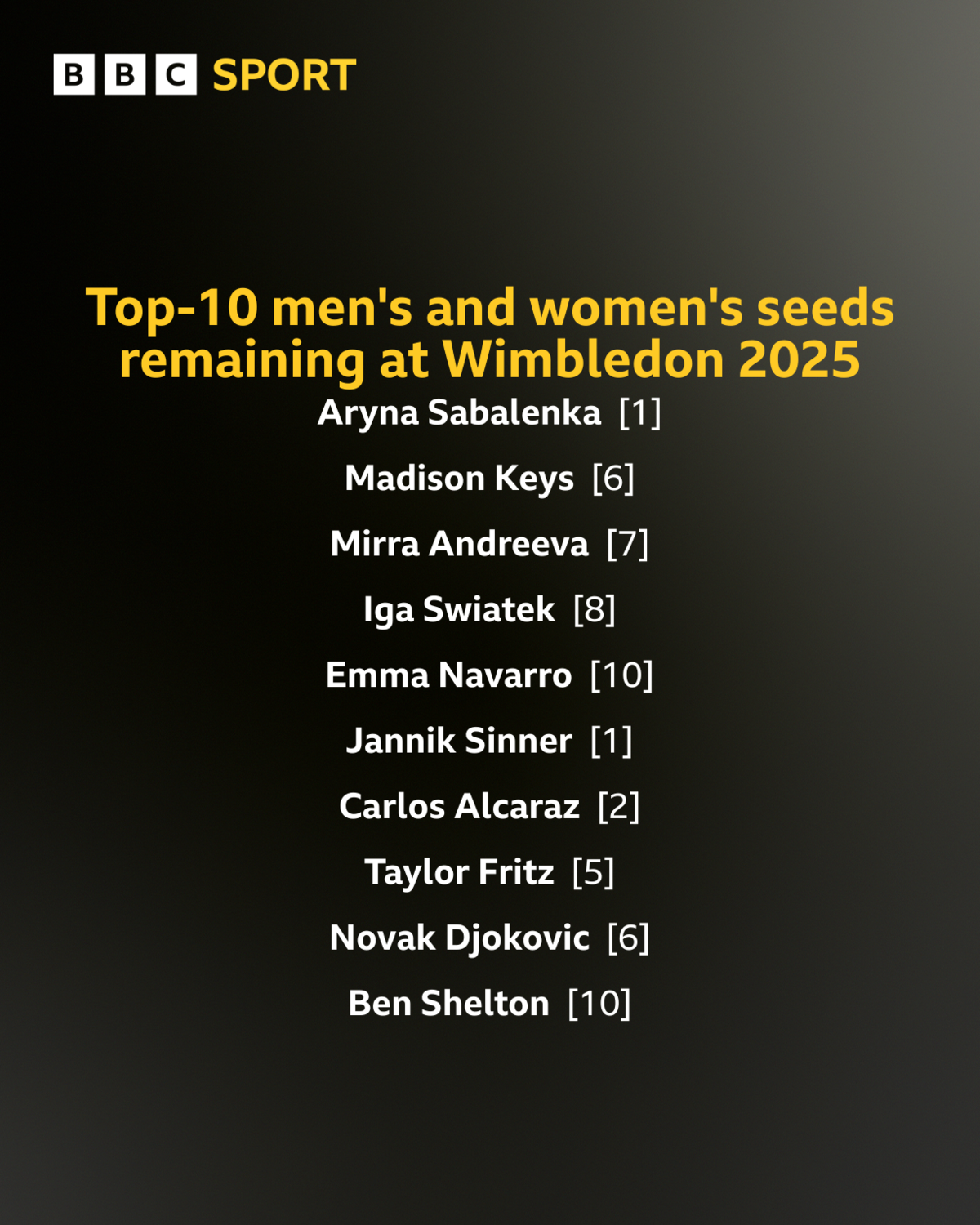
The domino effect
Could the sight of other top seeds going out cause others to fear the same fate, while giving lower-ranked players greater belief?
Still in contention after coming back from a set down in her opener, American sixth seed Madison Keys said: "I think when you are sitting and watching everyone kind of fall, it adds a little bit of stress to the situation. I was pretty close in my first round, so I feel like I dodged a bullet a little bit."
In addition to the short grass season and demanding schedule, American former player Tracy Austin also pointed to the increasing depth in both the men's and women's games, with lower-ranked players believing they can upset the top seeds.
On the stronger competition, Frances Tiafoe, the 12th seed beaten by Norrie in the second round, said: "You have [unseeded] floaters and some young guys playing well. The game is just really tough, it has incredible depth right now. If you're not ready to go, you're going to lose. It seems like [some of the seeded] guys weren't ready to go."
Former British number one Jo Durie added: "I think everybody in the locker room is thinking, 'I have got a chance at this tournament'. I really do think more seeds are going to fall."
Who might benefit?
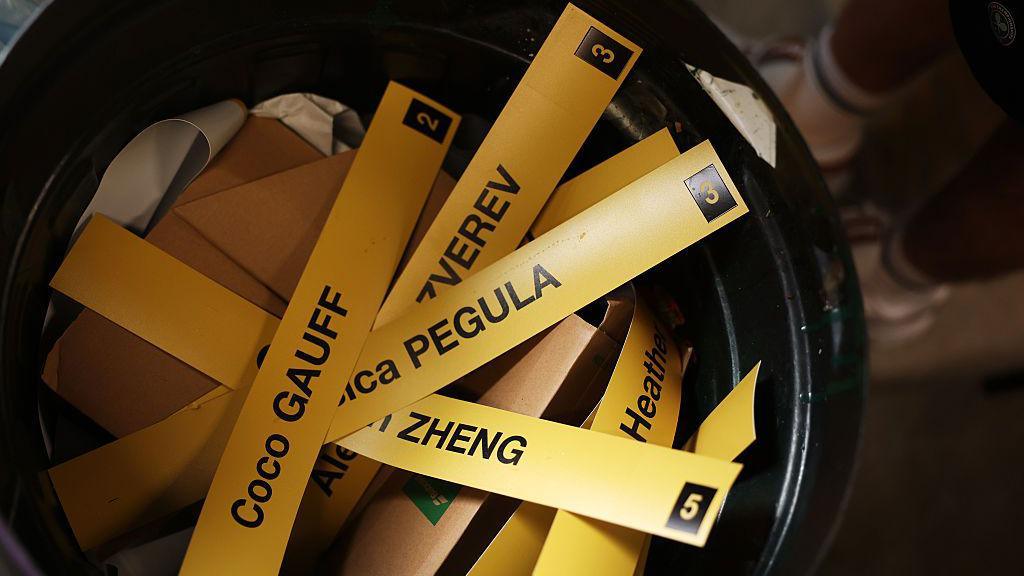 Image source, Getty Images
Image source, Getty Images
In a quarter of the women's draw which included the eliminated Paolini and Chinese fifth seed Zheng Qinwen, American Amanda Anisimova has perhaps benefited most.
The 13th seed would not face anyone ranked higher than 30th seed Linda Noskova until the semi-finals, where she could meet world number one Sabalenka - although the unseeded Naomi Osaka, a four-time major winner, remains in her quarter.
In the men's singles, Russian Karen Khachanov can reach the quarter-finals without facing a fellow seed, following defeats for Zverev, ninth seed Daniil Medvedev, 16th seed Francisco Cerundolo and former runner-up Matteo Berrettini.
Norrie could also make it to the quarter-finals without encountering another seed, with Brazilian teenager Joao Fonseca or qualifier Nicolas Jarry awaiting in the fourth round if the Briton can first overcome Mattia Bellucci.
Between 2002 and 2019, men's singles seedings were determined by a surface-based formula reflecting recent grass court achievements, before it aligned with the world rankings used for the women's draw.
On whether the amount of early shocks this year provides a case for bringing that back, former world number five Durie said: "I do think there should be a consideration because grass is really unlike all the other surfaces. I think it was a good thing at the time. It would be interesting if they brought that back."

 2 months ago
37
2 months ago
37
